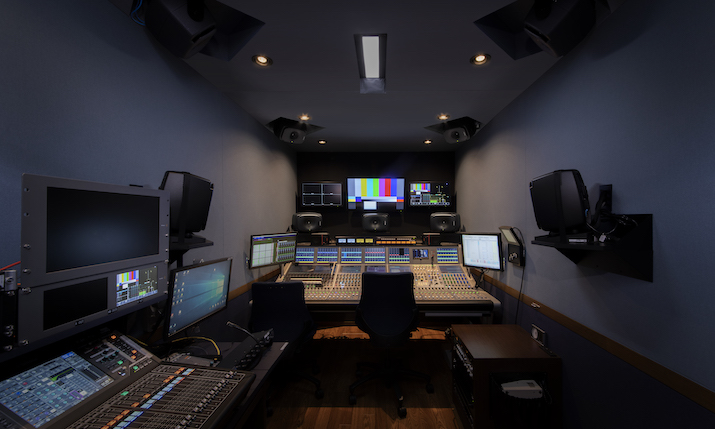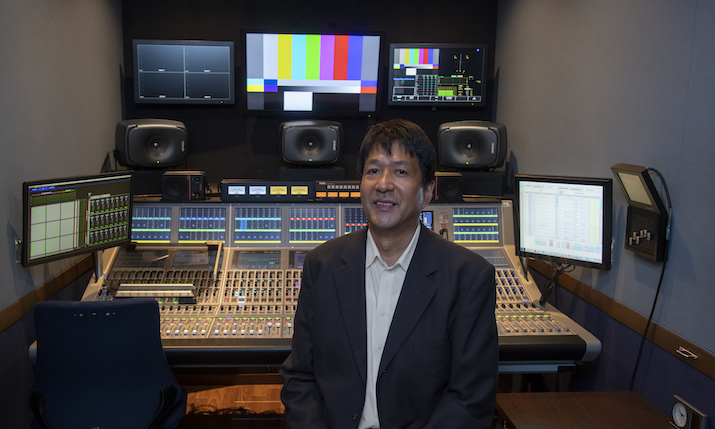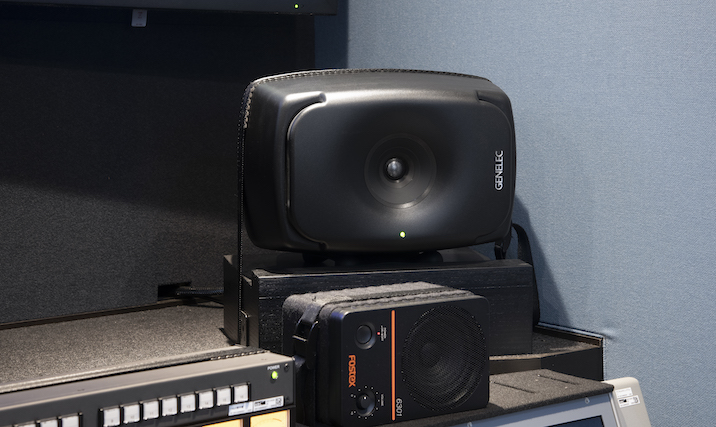Genelec helps ABC Television create future-proof immersive OB truck

ABC Television, a Japanese broadcaster focused on baseball, football and other sports, concert and music programmes, has upgraded its OB truck to a 5.1.4 immersive format featuring a Genelec The Ones Smart Active Monitoring System configured and calibrated with GLM loudspeaker management software.
Since the days of Japan’s digital BS broadcasting, ABC TV has been actively involved in surround sound production, but the company’s focus on the future was a key deciding factor in adopting the 5.1.4 format for the newly upgraded truck.
“In organisations where the standards for next-generation broadcasting are discussed, such as ARIB (Association of Radio Industries and Businesses), support for 3D audio is currently under consideration,” commented Sadanari Iwahashi of the Asahi Broadcasting Company, ABC TV’s parent company. “When we considered an OB truck which could be used 10 or 15 years in the future, we concluded that it’s necessary to support immersive formats.”
Iwahashi explained that ABC TV is currently conducting more tests related to immersive sound, and its post-production studio has also been upgraded to 5.1.4 channels, ahead of most other companies.
“As broadcasting starts to support immersive audio, we will be able to monitor the sound live from the site, and recordings can be brought to the immersive post-production room for further processing. We think it makes sense to have a mobile unit ready to record immersive sound for many reasons. For example, when we record a concert, we could approve the use of the sound in other events and programmes as well. It is also important that we have four monitors installed in the ceiling from the start, so that we can just start immersive monitoring without the hassle of setting up.”

Sadanari Iwahashi, Asahi Broadcasting Company
Compared to a standard studio, OB trucks have many restrictions on size, structure and measurements due to road traffic laws. The incorporation of an immersive system was even more challenging, so the Japan Acoustic Engineering Company planned the acoustics and Keisei Motor Manufacturing built the truck. One of the most important design features was the positioning of the Genelec monitors so that they were all equidistant from the listening position, as far as possible.
The first noticeable thing when stepping inside the truck is how high the ceiling is. The production section is custom made with a height of approximately 2.2 metres, with four Genelec 8331 coaxial three-way monitors mounted in recesses in the ceiling. These are complemented by two more 8331s for surrounds, three 8341 models in the LCR positions, and a 7360 subwoofer.

The Ones 8341 three-way coaxial monitors were used in the LCR positions
“The goal of this ceiling height was to ensure as much distance between the monitors as possible,” continued Iwahashi. “One particular challenge was the position of the left and right surround monitors which, due to the structure, would be closer to the listener than the LCR channels. The ideal angle for rear monitors is 110 degrees +/- 10 degrees, but if we applied the same distance as the front monitors using that angle, it would inevitably exceed the width of the van. So we compared the sound by prioritising either the angle or the distance, and in the end decided to prioritise the angle. In order to also get as much distance as possible, the rear monitors were installed slightly above the horizontal position, at an elevated angle.”
Genelec’s GLM calibration software played a big role in the trial-and-error phase of making acoustic adjustments in the truck’s very limited space. Since it can be used to adjust level, frequency response and time-of-flight, GLM was a great help in creating the ideal monitoring environment, as Iwahashi recalled:“Actually, GLM software was one important reason why we chose Genelec. We adjusted the angle of each monitor and fixed the reflections with sound absorption, calibrated them and then repeated the test listening and fine-tuning process. GLM was a great help, and the visualisations of frequency dip points were easy to understand too.
“Of course, we tested several different studio monitors during the installation process. Out of all the monitors we tested, The Ones stood out because they recreated sounds from all kinds of sources, with a very wide frequency range. In a mobile truck, there is a TV monitor set up in front of the mixer, and the monitors must be installed in a way that doesn’t obstruct it. So it is a great advantage that The Ones have a coaxial design, which means that the monitors can be positioned horizontally without any compromise in performance.”
The new immersive OB truck was commissioned after numerous listening tests, and Iwahashi is excited about upcoming productions: “In streaming services meant for movies and household use, the phrase ‘Dolby Atmos compatible’ is starting to pop up more and more. We also understand that the sales of soundbars were very strong during the stay-at-home COVID period. All this supports my initial thought that immersive audio is an important feature in creating an OB truck equipped for the future.”

